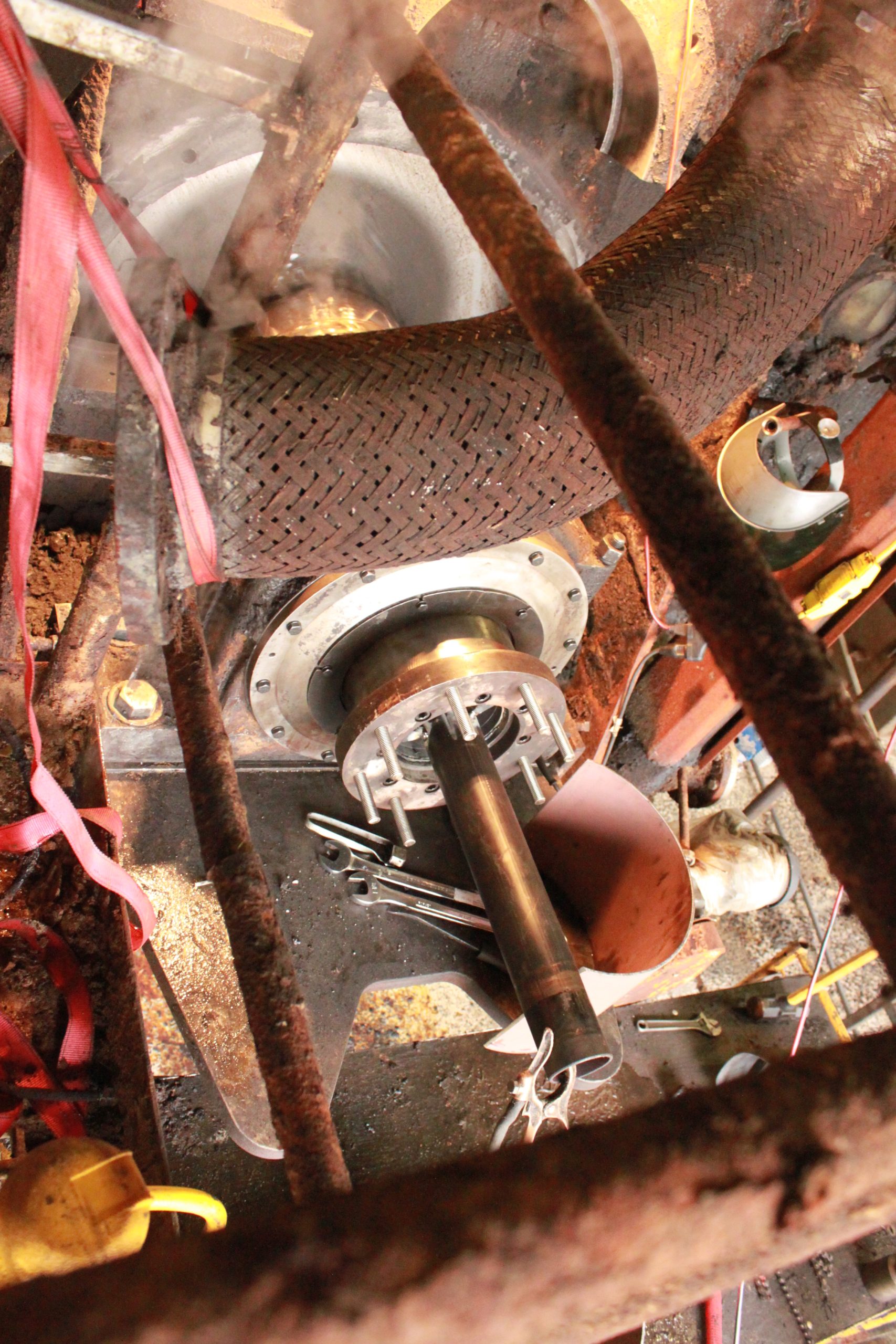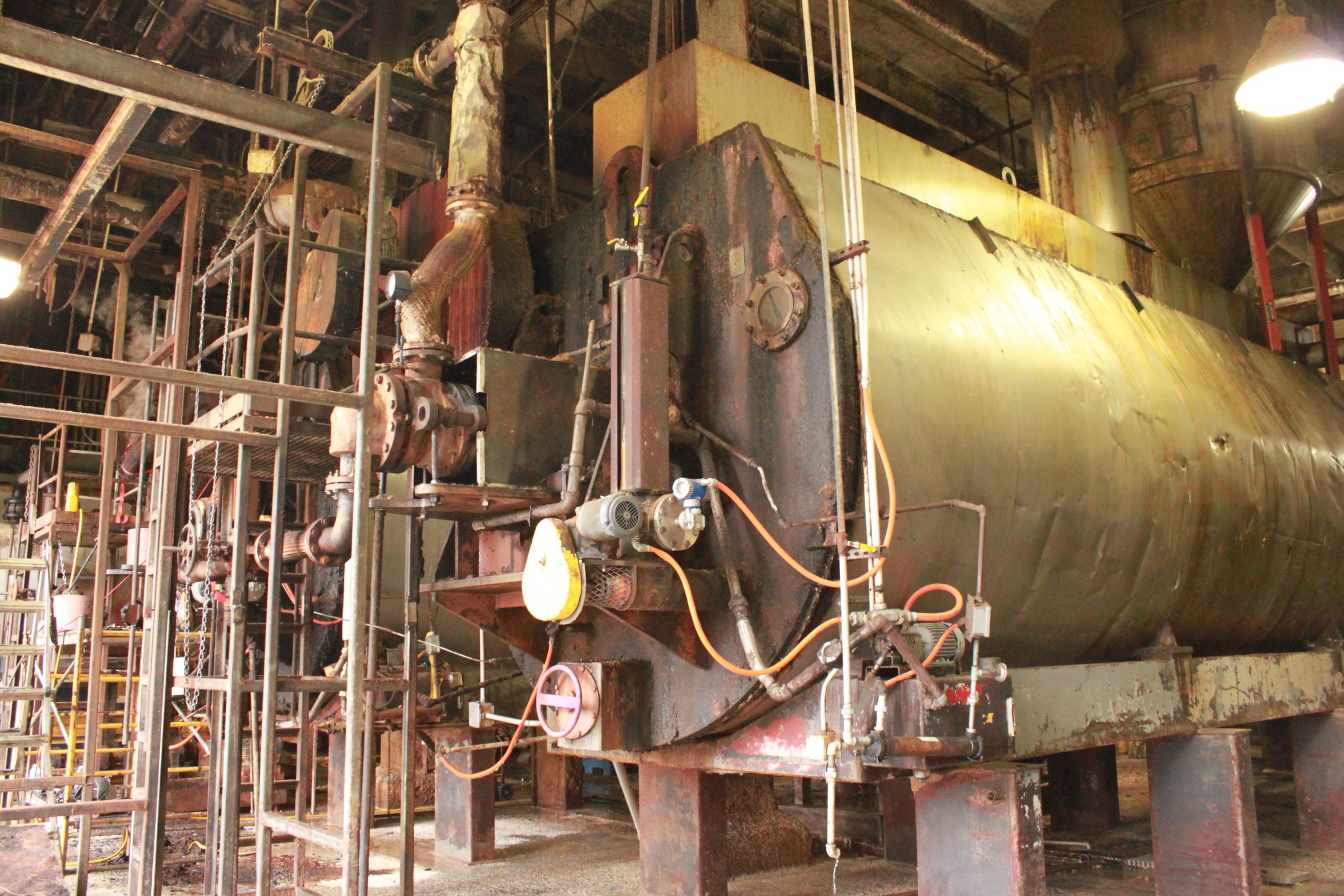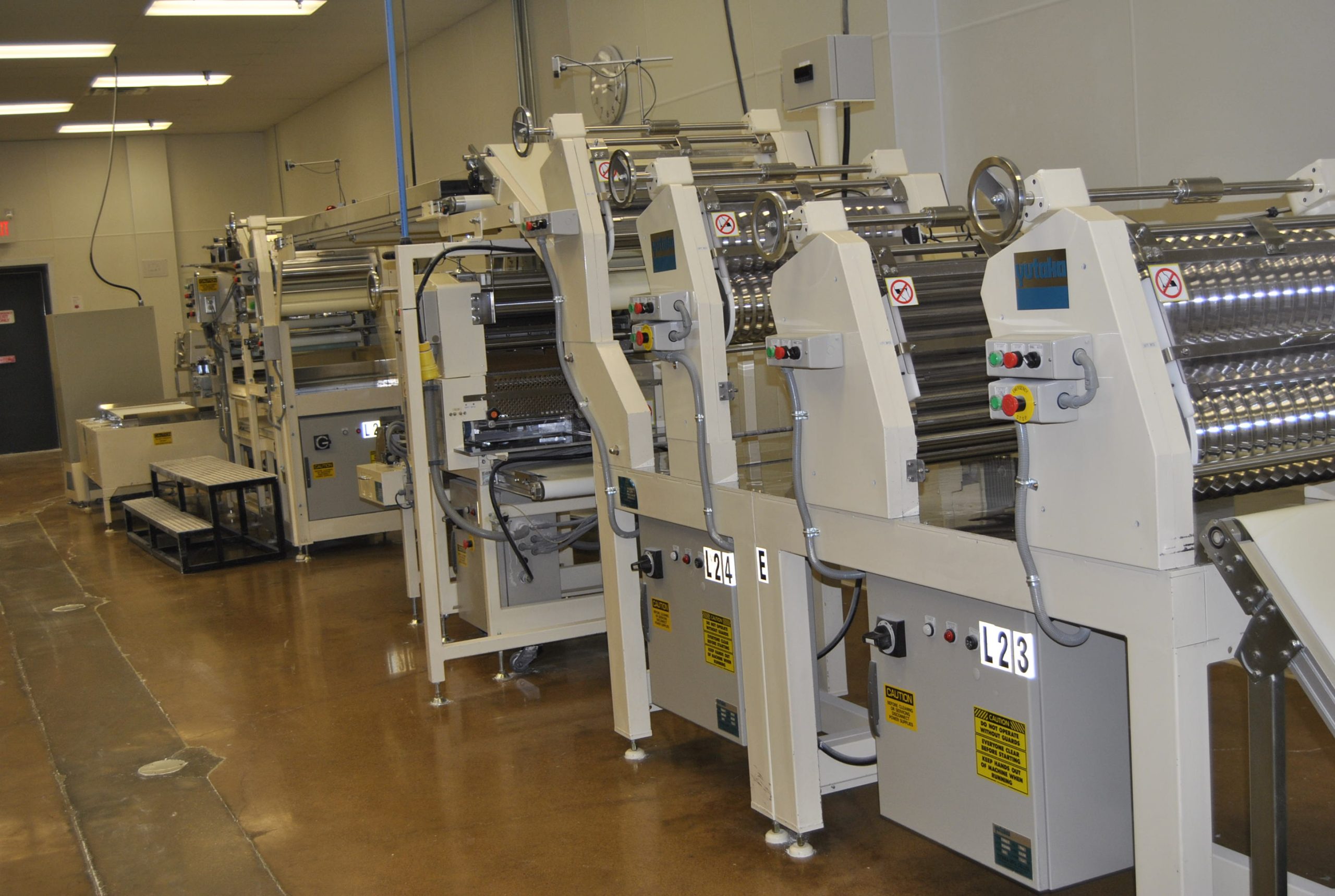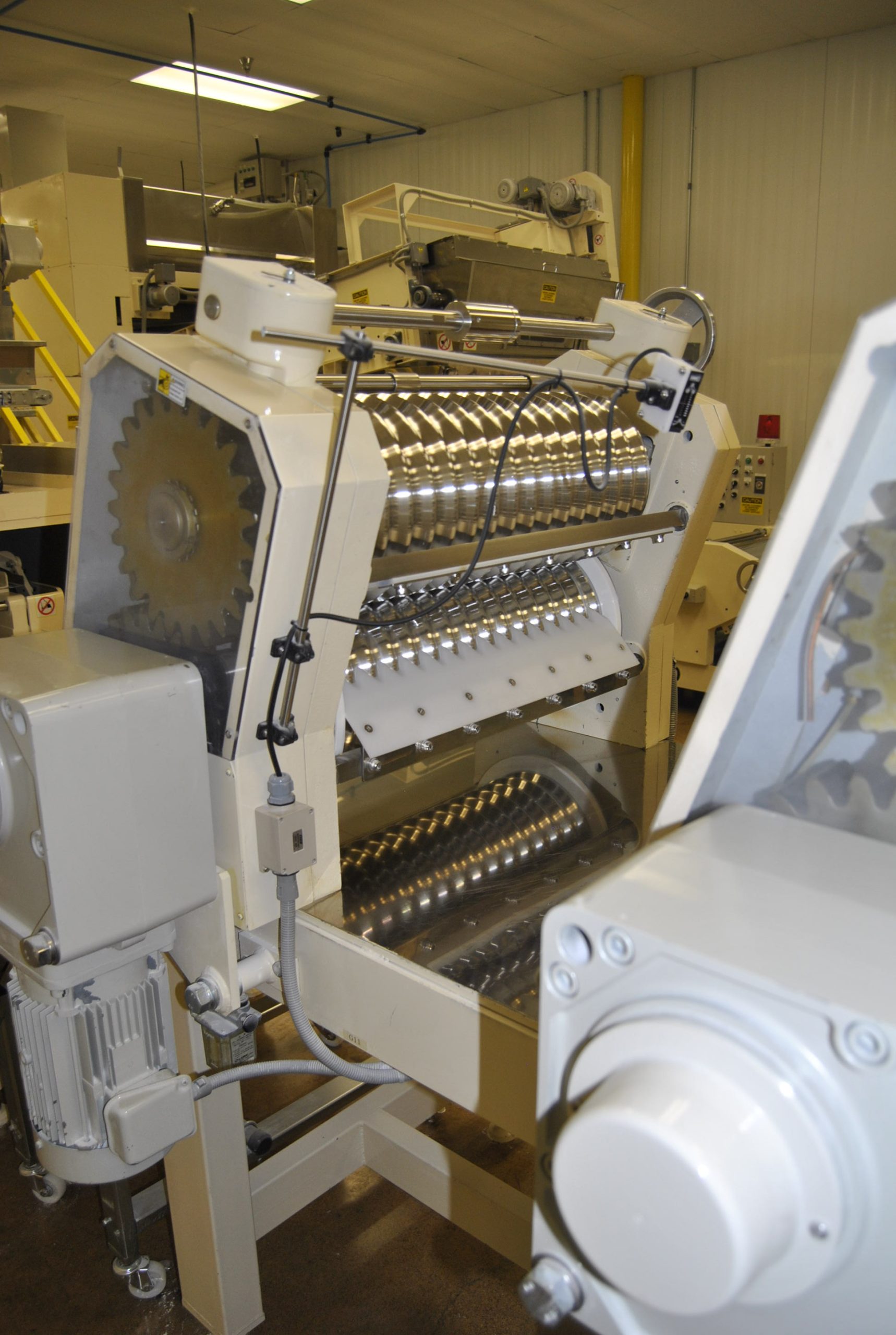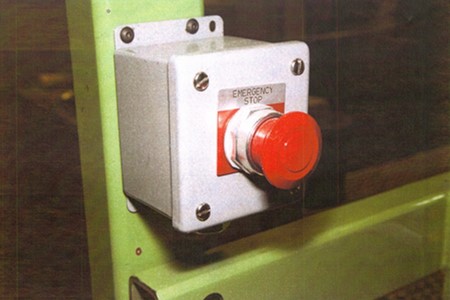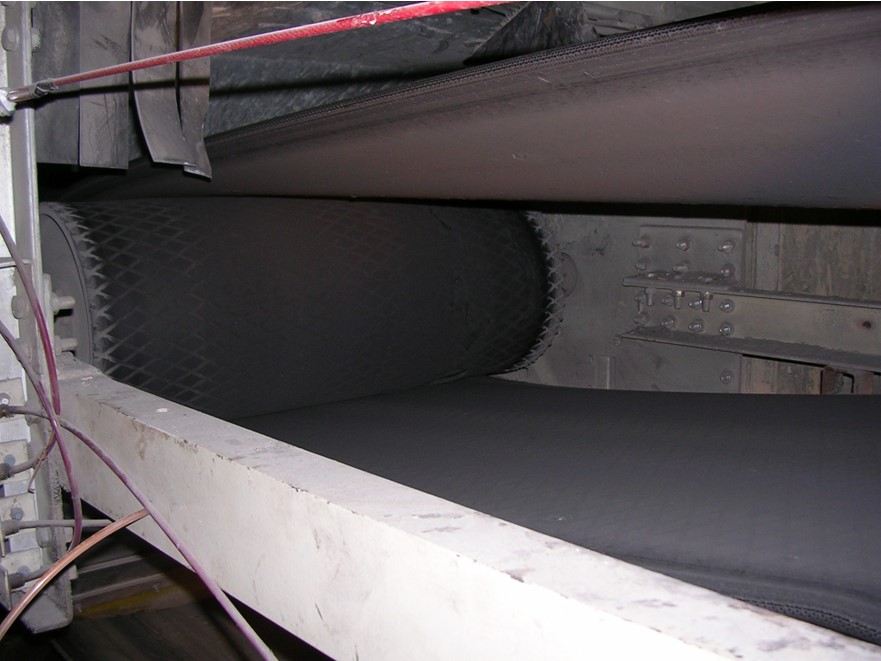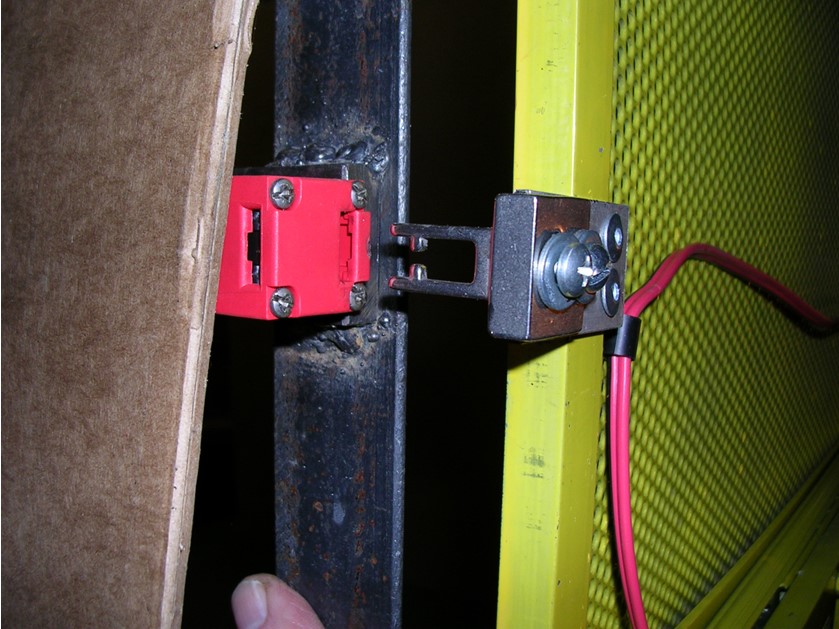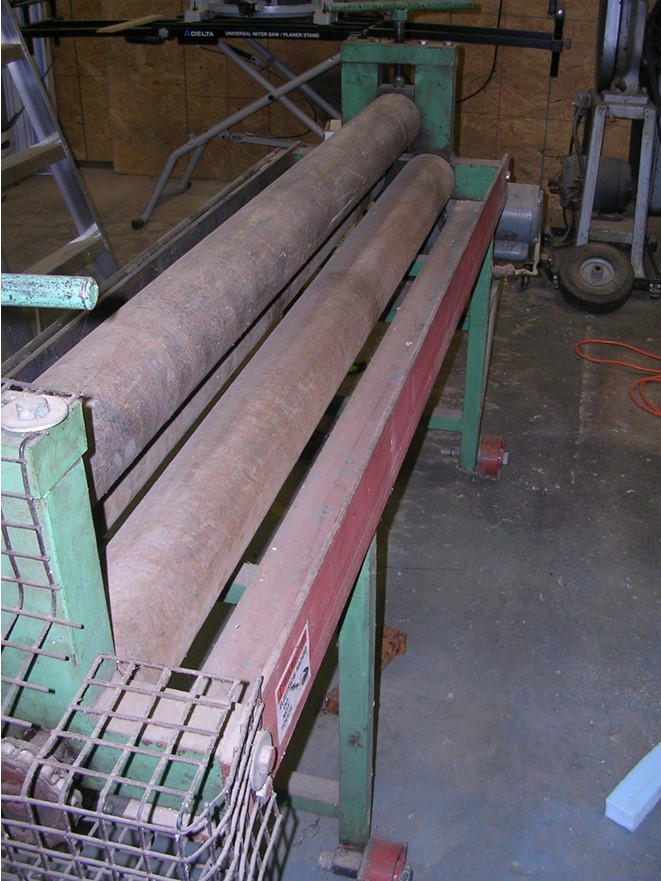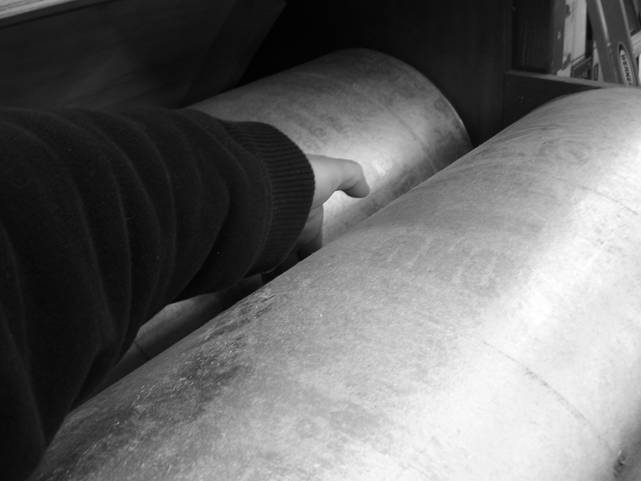Machine Guarding
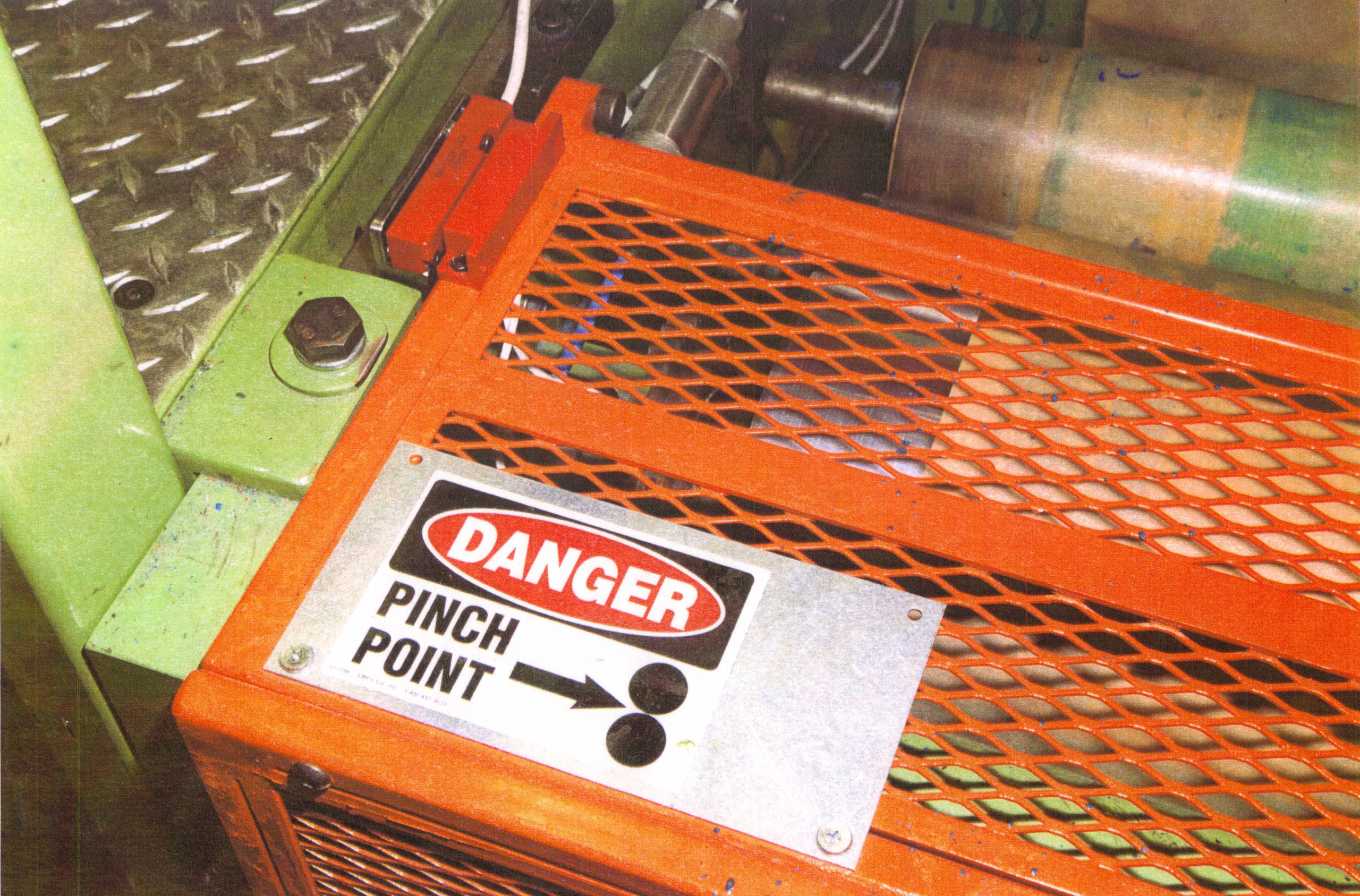
Mechanical and Safety Engineering has extensive experience with industrial machine guarding accidents with a wide variety of machinery. Guarding accidents can cover a very wide range of products. Guarding accidents occur when a poultry worker bypasses machine safeguards and gets injured, when a saw operator is cut on a spinning blade, when a press operator is crushed by a power press, when a machine operator is caught in an in-running nip point (the place where two opposing rotating mechanisms meet), when a person is cut by a lawnmower blade, when a farmer is injured or killed by agricultural machinery, and a multitude of possible scenarios. .
MASE often handles cases involving machine guarding. Industrial machinery often contain large amounts of mechanical energy. This results in high forces that are applied to the part and anything in its path. Inadequate machine guarding will inevitably result in accidents. Machines must be safeguarded so that it is impossible for a machine operator to be exposed to the point of operation of the machine, the place where the mechanical energy is released. MASE personnel have the experience to determine if an industrial accident is due to inadequate safeguarding, safeguard malfunction, or due to tampering with safety interlock devices.
Extensive standards specify the requisite measures to ensure protection from mechanical hazards. These industry standards can be used to determine if a machine has the necessary safety features, and whether the machine meets safety standards for the time period during which it was produced. Showing either compliance or violation of these industry standards is typically adequate to show a machine is safe or unreasonably dangerous.
MASE has extensive experience developing guarding solutions to industrial machinery. Basic engineering principles can be applied to develop guarding solutions to every type of machine-related hazard. Failure of the manufacturer of a machine to provide adequate safeguarding can cause the manufacturer to be held responsible for injuries and damages by the machine. Employers of machine operators also are required by federal law to provide a safe working environment for their workers - this includes ensuring that machines are adequately guarded. Employers are often blamed and found responsible when the manufacturer of a machine is the party truly responsible for producing a safe product in the first place. Federal law can unfortunately protect manufacturers producing unsafe, faulty machinery. MASE believe that manufacturers are responsible for producing safe products - they have the expertise to fully understand the hazards of the product, and how to eliminate or safeguard those hazards. This said, employers are required by law to ensure that their workers are not exposed to hazards, and should employ safety engineers to ensure that their facilities do not contain unknown hazards that manufacturers have failed to remove or safeguard.
MASE provides engineering expert witness analysis, opinions, and testimony for your machine guarding case. Machine guarding accident cases usually involve machines that were produced without necessary guarding, or machines that have had their safeguards removed and/or bypassed. MASE can quickly and efficiently identify unguarded machine hazards as well as unnecessary machine hazards that could have been eliminated completely at the design stage. If a machine meets industry standards and engineering design protocol, we are happy to defend the safety features of a machine.
Common machine hazards can include the following:
Nip Points
A nip point is a hazardous area created by two or more mechanical parts rotating in the same plane in close proximity to each part, in opposite directions. These are also referred to as in-running nip points. The hazard here is the potential to get pulled into the machinery. Some nip points are designed to pull material into them in order for a machine to perform some alteration on the material, while some nip points are the result of power transmission and are not specifically designed to pull material into the machine. When an object, piece of clothing, or part of a person’s body contacts the nip point, the drive components will pull the object into the machine, when the forces acting on the object exceed the forces preventing the object from moving. The drive components will place resultant forces on the object perpendicular from the rotational point of the drive. For an object to get pulled in, there must be some sort of interference between the object and the drive components. The turning drive components will exert a frictional force on the object, the magnitude dependent on the interference and the amount of force being transmitted based on the this interference. The fixed drive components will pull the object into the machine when there is enough rotational friction force to pull the object or person into the machine.
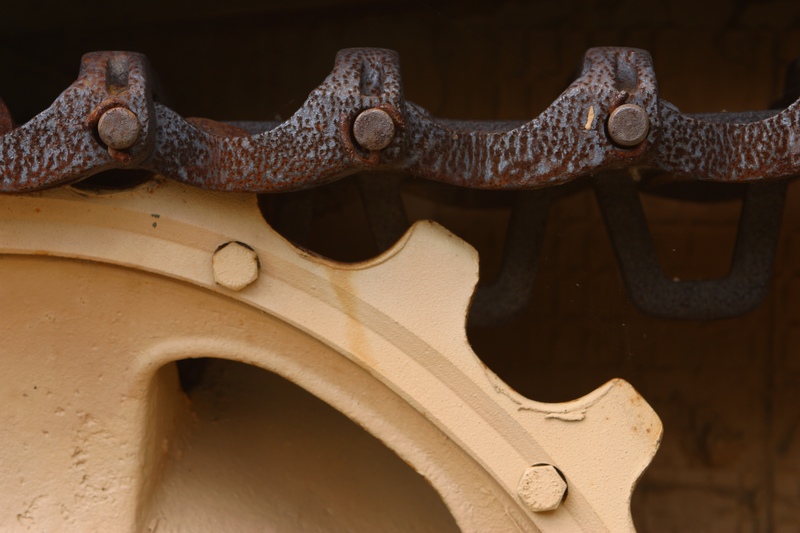
Example of a nip point
Catastrophic injuries often result from
being pulled into an in-running nip point.
Depending on the distance between the drive components, the nature of
the drive components’ surface characteristics, and the amount of force driving
the machine, person’s entire body can get pulled into a machine, or it may be
limited to a limb. When a limb is pulled
into a nip point, the body of the person may act as a physical barrier that
prevents the rest of the body from becoming pulled in. Degloving injuries can occur after the
person’s limb is pulled into the nip point.
When the body of the victim stops further entanglement in the hazard,
the rotating drive mechanisms may tear the person’s flesh from their body. While these are gruesome details, it is
important for a machine designer to be aware what can and does occur with
improperly guarded machinery.
Examples of nip point hazards can be
found on the drive mechanisms of conveyors, gears and pulleys. These mechanisms
are extremely dangerous as a machine operator can get pulled into the machine,
causing potential catastrophic body damage.
Machine operators have been pulled into nip points when loose clothing
became entangled in the nip point. Often
there are large amounts of force driving the components in nip points, as is
the case in the following figure. Any
accidental contact with a high power nip point will result in extreme physical
mutilation or death.
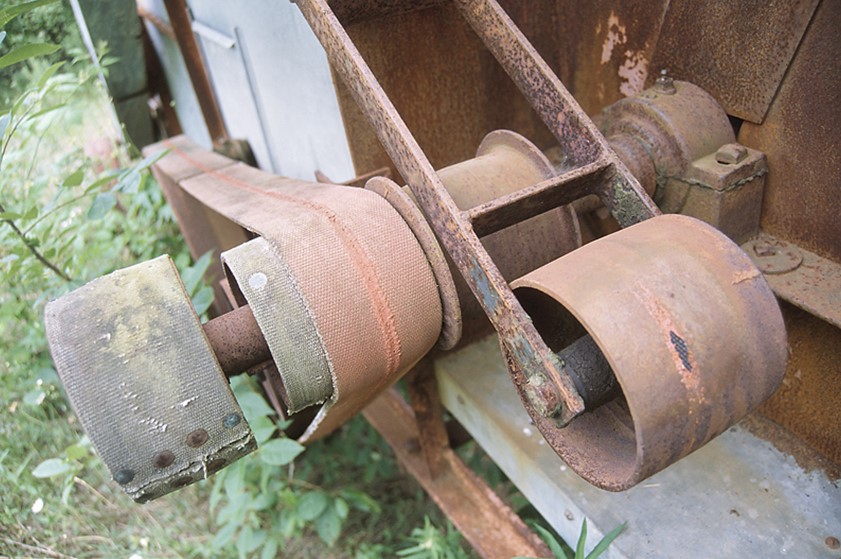
Example of a nip point
Pinch Points
A pinch point is any location where a person or part of a person’s body can be caught between two or more moving mechanical parts. Examples of pinch points can be found on brake presses, power drills, clamps, closing doors, hinges, scissor lift mechanisms, forklifts and anywhere that a crushing hazard exists. The following figure shows a press with the pinch point highlighted in black and yellow safety tape. This pinch point is the point of operation of the machine.
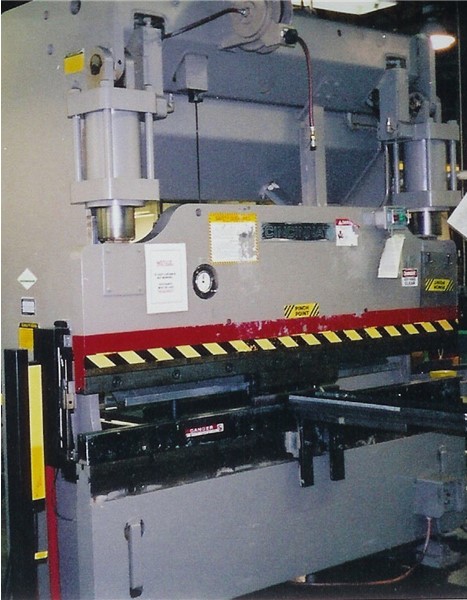
Power brake press with pinch point
Pinch point accidents may be less catastrophic than nip point injuries because the machine operator is not going to be pulled further into the machine. Even so, fatal crushing injuries can be sustained from powerful machines with pinch point hazards. Other common injuries from pinch point hazards include amputation and broken bones.
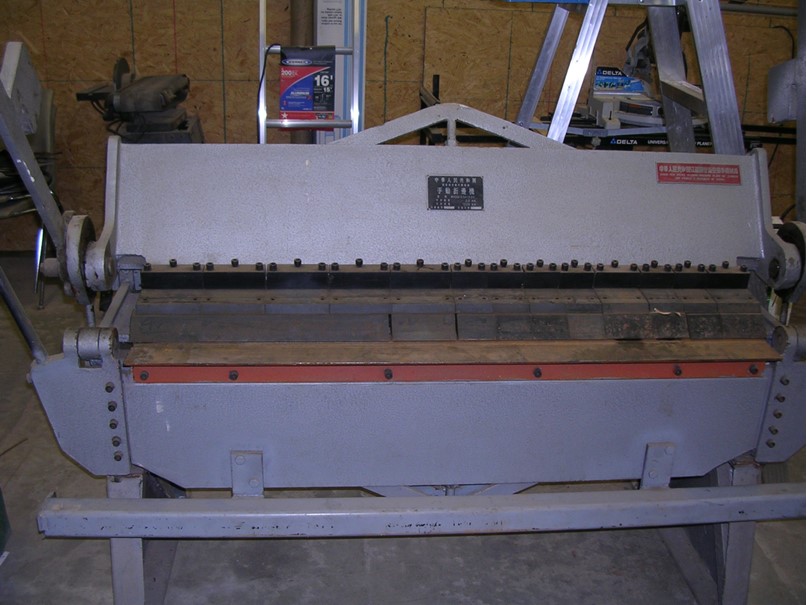
Manual brake press with pinch point
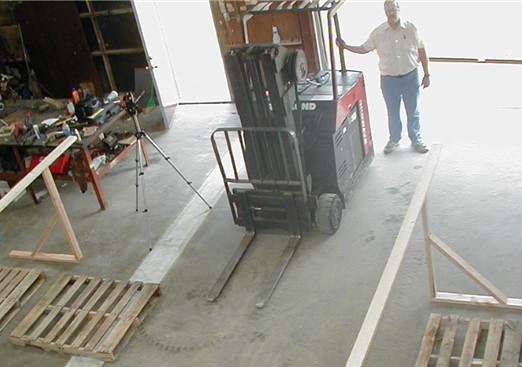
Forklift powered forks create pinch point hazard
It’s not just machinery that can have pinch points. Designers must be aware of pinch points regardless of what the product is. Baby and child products are regularly being recalled due to various hazards, including pinch point, entrapment, and strangulation hazards. The Consumer Product Safety Commission developed standards in 1974 for baby cribs. One of the requirements was the distance between slats of the crib. Babies can get strangled in between slats that are too far apart. Even though there are no moving parts involved – there was still a pinch point where babies could get killed. The same can occur with decorative-topped cribs and cribs with cutouts in the headboard.
Heavy objects can create pinch points when they are being moved, whether manually or with the assistance of power equipment. Heavy boxes, crates, barrels, machinery parts, and raw building material are examples of objects that can create pinch points when they are being transported and placed next to a hard surface or another heavy object. Closing doors also create pinch points. Powered overhead doors and gates pose the biggest hazards. These types of doors and gates are powered closed and have a pinch point between the leading edge of the door or gate and the hard surface which the door or gate extends to. Powered doors and gates normally have sensors to prevent crushing injuries if a person is caught in the nip point. Even manually powered doors and gates create the same pinch point. Manually powered doors and gates will likely not be closed with the same amount of force that powered doors are closed with, although they also will not likely have safety devices to prevent crushing injuries.
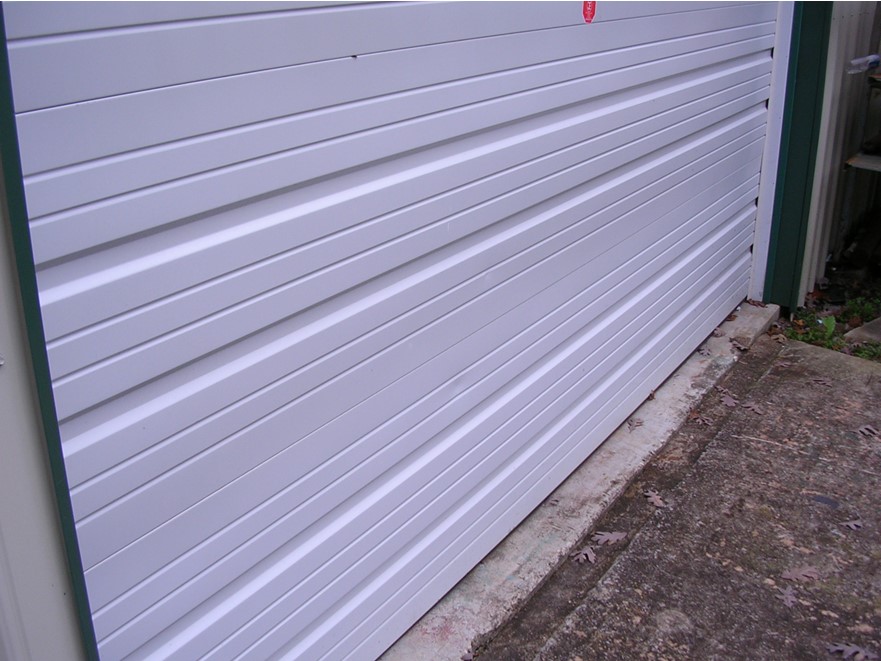
Powered overhead doors create a pinch point between the door and the floor
Moving vehicles have the potential to strike stationary or moving objects. The operator and passengers of moving vehicles must be protected from pinch point and crushing injuries in the event of a collision with another object. Forklifts, ATV’s, UTV’s, golf carts, walk-behind pallet jacks can cause crushing injuries if the operator is not protected. The author have seen numerous accidents involving various types of stand-up forklifts where the operators’ legs or feet get crushed between the moving lift and a stationary object. Vehicles without protected operator compartments such as all-terrain vehicles, utility vehicles, golf carts, lawnmowers, and tractors may crush the operator if the vehicle overturns. Vehicles with a higher center of gravity will have the potential to overturn, particularly if the vehicle is traveling over uneven terrain. This is a foreseeable scenario that the product designer must safeguard.
Moving vehicles also create pinch point hazards when they make contact with, or come near to a heavy or fixed obect or structure. People will likely be severely injured if they are caught between a moving vehicle and a stationary object due to the magnitude of forces involved.
Shear Points
A shear point is any point where part
of the operator can be caught between a moving mechanical part and a stationary
part of the machine that create a cutting motion. A shear point can also involve two machine
components or moving parts that move past each other. Examples of shear point hazards include
shears, punch presses, and elevators.
Shearing machines are used to cut sheet metal, and involve either
hydraulic powered cutting strokes, or counterbalanced weights to generate
enough force to shear the material. The
shear hazard exists between the blade of the shearing machine, and the rear
edge of the work table that the piece rests on.
Punch presses are used to stamp parts out of sheet metal, and have shear
hazards where the punch die meets the material.
Elevators and any other powered linear machinery have shear points at
any point where a solid surface exists that the elevator passes.
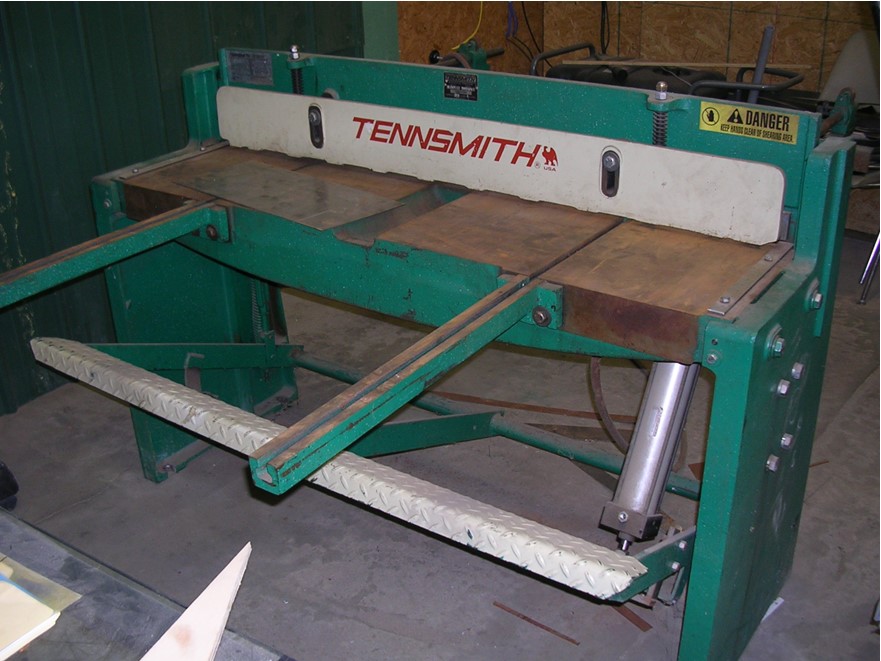
Shear Press with Shear Point Hazard
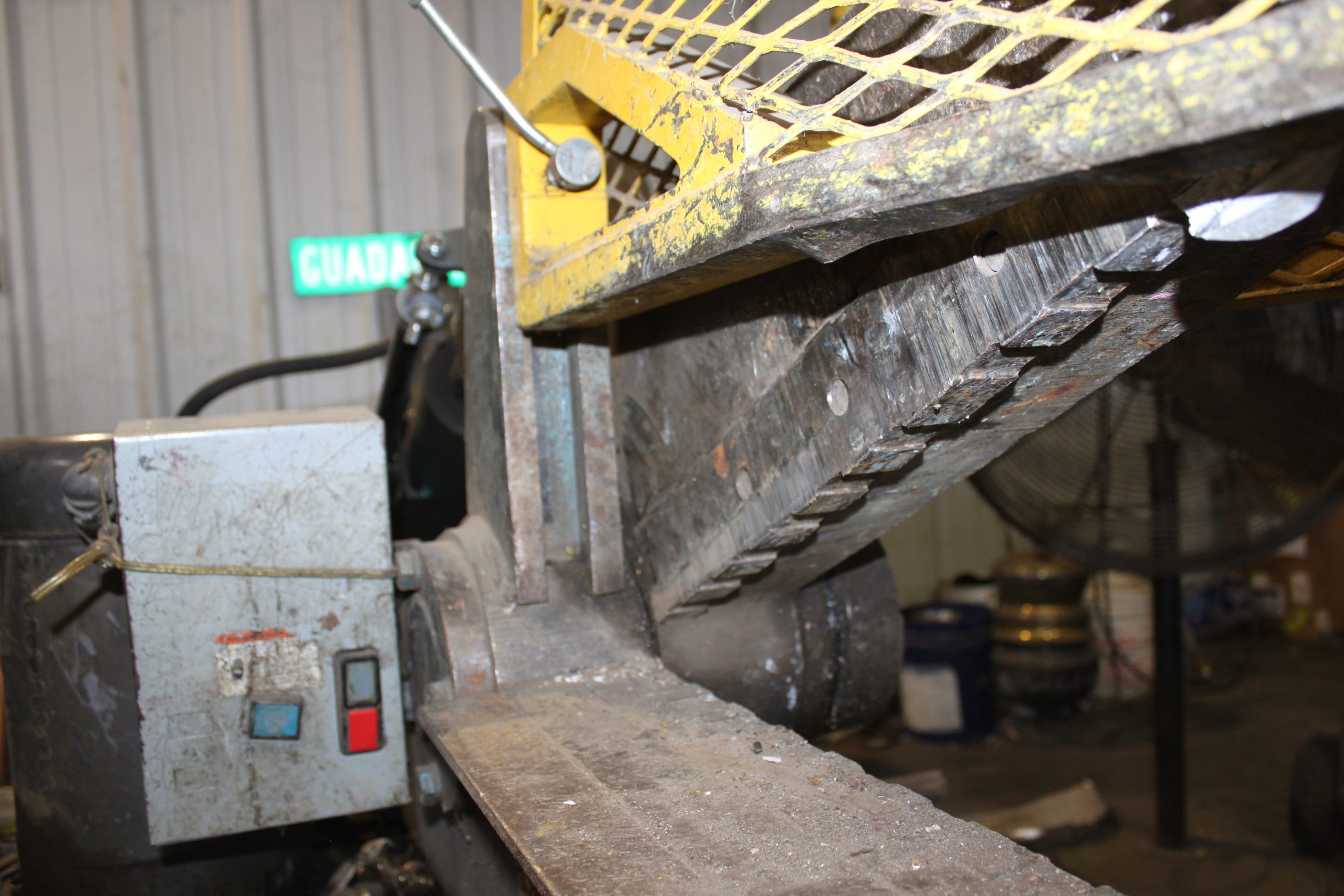
Alligator Shear Used for Recycling
The mast of forklifts creates a shear point wherever the lifting platform passes a solid member of the forklift, or when the lifting platform passes a solid object or structure. People can be seriously injured or killed when riding a pallet on the forks of a lift truck to be raised or lowered. These people are then exposed to the multitude of pinch and shear points that a forklift has.
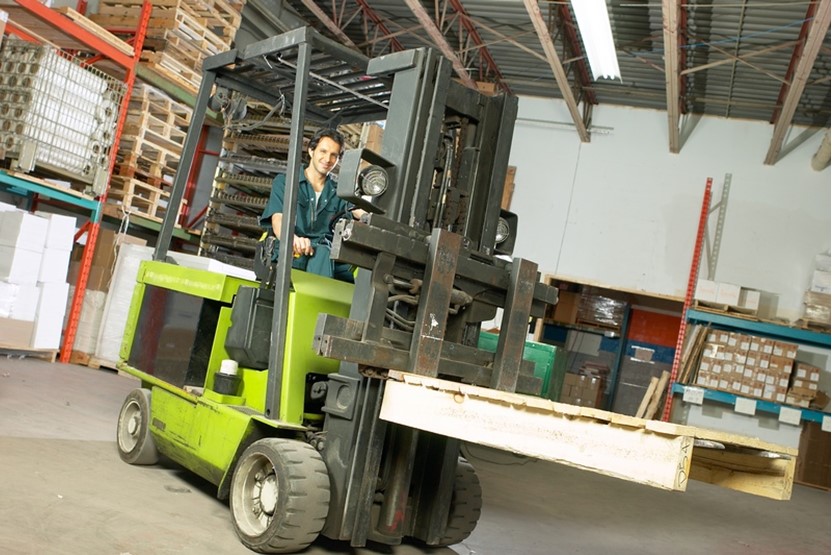
Forklift Masts Have Shear Point Hazard
Shear
points don’t always involve machinery.
Other products can have hidden shear points that are left
unguarded. Folding high chairs are an
example of a product that can have a shear point. Folding high chairs that have a scissor type
mechanism to collapse and expand have sharp points where these scissor
mechanisms close. Children have had
fingers amputated by these mechanisms when a high chair collapses while they
are holding the legs of the high chair. Ladders
and step stools also have scissoring type mechanisms that create shear
points.
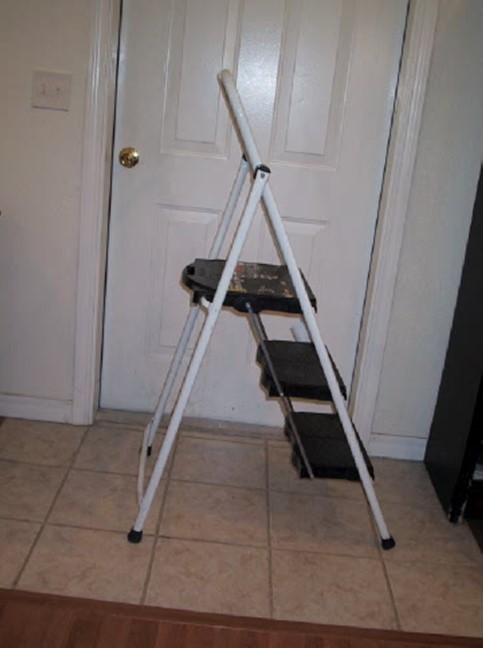
Collapsing
step stool with shear point
Shear
points can be missed by designers. The
authors worked on a case involving a children’s ATV that had a chain and
sprocket drive with a metal plate covering the outside of the sprocket. Children’s legs of a certain length would
hang right at the level of the sprocket drive with its in-running nip
point. The guard did not restrict access
to the nip point, and children got pulled into the nip point. As if this wasn’t bad enough, the thin metal
guard covering the sprocket acted as a knife blade when the children’s feet
were pulled into the sprocket. This
resulted in amputated toes. Designers
must constantly assess moving parts, and how those moving parts can interact
with other parts of the product to create shear points and other hazards.
MASE works with a variety of machine guarding cases, including:
- Power press accidents
- Food processing equipment accidents
- Packaging machinery
- Labeling machinery
- Conveyors
- Lawnmower accidents
- Wood chipper accidents
- Tractor rollover accidents
- Table saw accidents
- Power tool accidents
- Metal fabrication machinery
- Punch press accidents
- Machine guarding accidents
- Rubber press accidents
- Power transmission accidents
- Rotating shaft accidents
- Guarding interlock failure related accidents
- Lumber processing equipment accidents
- OSHA violations
- Lockout/Tagout accidents
- Alligator shear accident
Call us today at (855) 627-6273 or email us at info@mase.pro to discuss machine guarding issues.
